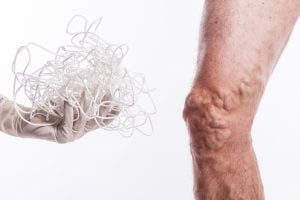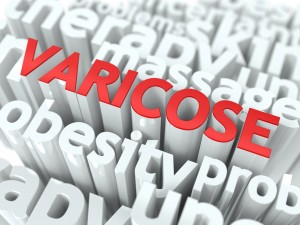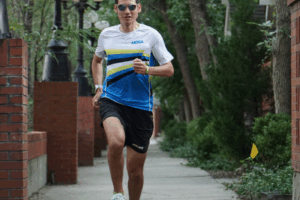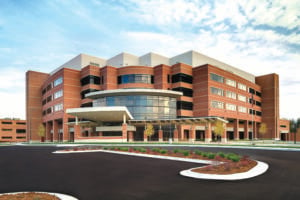Varicose veins are swollen, twisted veins that can be seen just under the surface of the skin. Weakened valves and veins can increase the blood pressure in a person’s legs, which can cause varicose veins.
Our veins have a one-way valve that keeps blood flowing from the legs up toward the heart. When these valves do not work as they should, blood collects in the legs and pressure builds. The veins become weak, large, and twisted.
Varicose veins most  commonly occur in the legs, affecting the veins near the surface of the skin, but varicose veins also can form in other parts of the body.
commonly occur in the legs, affecting the veins near the surface of the skin, but varicose veins also can form in other parts of the body.
When veins bulge or become twisted, as they do when someone is affected by varicose veins, blood flow through them can become sluggish or slow. This can cause superficial blood clots, also known as superficial thrombophlebitis, phlebitis, or superficial venous thrombosis. The superficial clots that can occur with varicose veins can cause leg swelling, redness, pain, and tenderness in the affected limb or around the affected vein.1
Unlike deep vein thrombosis (DVT) or blood clots that form in the deep veins of the legs, the superficial clots associated with varicose veins do not usually travel to the lungs or cause a pulmonary embolism (PE) or blood clot in the lung.2 DVT/PE is a serious condition and does not usually occur with varicose veins, because varicose veins affect the veins close to the surface of the skin.3 However, with severe varicose veins, there can be a risk that a DVT might occur.4 Your healthcare provider can help you assess your risk for deep vein thrombosis.
Risk Factors for Varicose Veins
Varicose veins may run in families or may be an inherited condition, and other factors that may increase pressure in the veins and cause or contribute to the formation of varicose veins5 include:
- Overweight or obesity
- Older age
- Being female
- Being inactive
- Leg injury
- Pregnancy

- Smoking
- Taking contraceptive pills or hormone replacement
Symptoms of Varicose Veins
The symptoms of varicose veins can vary from person to person, but the most common symptoms of varicose veins6 may include:
- Color changes in the skin
- Sores on the legs
- Rash
- Sensations in the legs, such as a heavy feeling, burning, and/or aching
Speak to your healthcare provider if you have symptoms of varicose veins.
Resources
Click on the links below to read more about varicose veins:
Patient Information, Varicose Veins, Cleveland Clinic
Patient Information, Vascular Medicine, Society for Vascular Medicine
Patient Information, Vascular Web, Society of Vascular Surgery
Patient Information, Varicose Veins, Merck Manual
References
- http://www.hopkinsmedicine.org/healthlibrary/conditions/cardiovascular_diseases/varicose_veins_85,P08259/
- http://vmj.sagepub.com/content/20/1/88.full
- http://www.hopkinsmedicine.org/healthlibrary/conditions/cardiovascular_diseases/varicose_veins_85,P08259/
- http://www.hopkinsmedicine.org/healthlibrary/conditions/adult/cardiovascular_diseases/varicose_veins_85,p08259/
- http://www.hopkinsmedicine.org/healthlibrary/conditions/cardiovascular_diseases/varicose_veins_85,P08259/
- http://www.hopkinsmedicine.org/healthlibrary/conditions/cardiovascular_diseases/varicose_veins_85,P08259/
Click here to learn how you can support the mission of the National Blood Clot Alliance.




